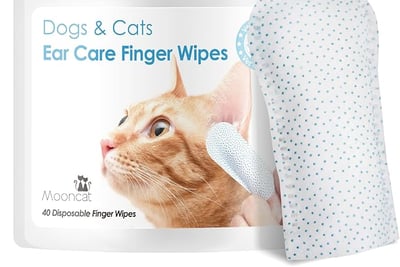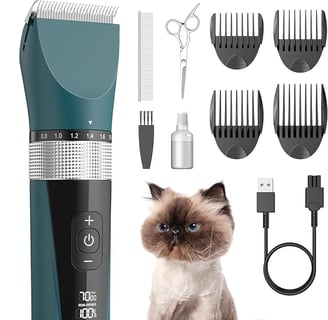Pet Grooming at Home: Cat Edition
5 min read


Understanding Your Cat's Grooming Needs
Grooming is an essential aspect of cat care that goes far beyond mere aesthetics; it is crucial for maintaining your feline friend's overall health. Different breeds of cats possess unique fur types that require specific grooming routines. For example, long-haired breeds like Persians and Maine Coons need more frequent grooming to prevent matting, while short-haired breeds, such as Siamese and American Shorthairs, generally require less. Understanding your cat's grooming needs will help ensure a healthier, happier pet.
One of the primary benefits of regular grooming is the prevention of matting. Mats can trap dirt, debris, and even moisture against the skin, facilitating skin irritations and infections. By routinely brushing your cat's coat, you can remove tangles and knots, ultimately contributing to their physical well-being. Moreover, grooming helps reduce shedding, which can be particularly advantageous for allergy sufferers in your household. Less fur around the home also means a cleaner living environment.
Another vital consideration is the reduction of hairballs, a common issue among cats due to their grooming habits. When cats groom themselves, they ingest loose fur, which can accumulate in the stomach, forming hairballs. Regular grooming sessions, therefore, can minimize the amount of fur ingested, alleviating this problem. Additionally, the grooming frequency may vary based on your cat’s age and activity level. Older cats with less mobility may need more frequent assistance, whereas younger, active cats may require a different schedule. Moreover, the texture of their coat, whether it is fine, coarse, or curly, can also influence how often you should groom your cat.
In conclusion, understanding your cat's grooming needs is paramount to ensuring their health and comfort. By selecting the appropriate grooming techniques based on breed-specific requirements and individual characteristics, you can enhance the quality of life for your feline companion.
Essential Grooming Tools for Cat Owners
Grooming your cat at home can be a rewarding experience that fosters a stronger bond between you and your feline friend. To ensure this process is effective and enjoyable, it is important to have the right grooming tools at your disposal. Below, we outline the essential tools needed for cat grooming, including brushes, combs, nail clippers, and grooming wipes, providing insights into their purposes and proper usage.
First and foremost, a good quality cat brush is essential for maintaining your pet’s coat. There are several types available, such as slicker brushes, which are ideal for removing loose fur and preventing matting, particularly in long-haired breeds. For short-haired cats, a bristle brush can help distribute natural oils while also minimizing shedding. When brushing your cat, it is important to start at the head and work your way down, always brushing in the direction of the fur growth.
Next, a comb is a valuable addition to your grooming toolkit. Combs are particularly effective for detangling knots and removing debris from your cat's coat. Look for a comb with both wide and narrow teeth, allowing you to tackle different types of tangles easily. Always handle your cat gently to avoid causing any undue stress during this process.
A good pair of nail clippers is crucial for maintaining your cat’s paw health. There are various styles available, from scissor-type clippers to guillotine clippers. Choosing a clipper that fits comfortably in your hand can ease the grooming process. It is important to trim only the tip of the nail and to avoid the quick, which is the pink section that contains blood vessels.
Lastly, grooming wipes can be a convenient tool for quick clean-ups and maintaining your cat's hygiene between grooming sessions. They are especially beneficial for cats that may resist traditional baths. However, ensure that the wipes you choose are specifically formulated for cats and are free from harmful chemicals. Selecting the right grooming tools based on your cat's specific needs and sensitivity will enhance the effectiveness of your pet grooming routine.
Step-by-Step Grooming Techniques for Cats
Grooming your cat at home can be a rewarding experience for both the pet and the owner. It not only helps in maintaining your cat’s hygiene but also strengthens the bond between you. Below is a comprehensive guide to effectively groom your feline friend.
Begin with brushing. The frequency and technique depend on your cat’s coat type. For long-haired cats, such as Persians or Maine Coons, a wide-toothed comb followed by a pin brush works well. Start by carefully detangling any knots, then brush downwards to remove loose fur. For short-haired breeds, a rubber grooming glove or a fine-tooth comb can effectively eliminate dead hair and stimulate the skin's natural oils. Ensure to brush gently to avoid discomfort.
Next, nail trimming is an essential part of grooming. It is advisable to use a specialized cat nail clipper. Start by gently pressing on the top of your cat's paw to extend the nail. Carefully trim just the sharp tip, avoiding the quick, which is the pinkish area. If your cat is particularly feisty, consider getting a second person to assist or take breaks to keep the cat calm.
Cleaning your cat's ears also contributes to their overall health. Use a damp cotton ball or a vet-recommended ear cleaner to gently wipe the outer part of the ear. Avoid inserting anything into the ear canal as this can cause injuries or infections.
When it comes to bathing, most cats are adept at self-cleaning, but in cases of heavy soiling or specific skin conditions, a bath may be necessary. Use lukewarm water and a cat shampoo, ensuring to wet their coat thoroughly while being cautious not to get water in their ears or eyes. Rinse thoroughly and wrap your cat in a warm towel after the bath.
Grooming temperamental cats or those with special needs may require more patience and gentle handling. Always observe your cat’s cues and take breaks when necessary. Employing positive reinforcement, such as treats or praises, can help make the grooming process more enjoyable.
Creating a Positive Grooming Experience
Making the grooming process a pleasant experience for both the cat and the owner is essential to maintaining a healthy relationship and ensuring the cat’s overall well-being. One effective strategy is to gradually acclimate your cat to grooming. Start by allowing your cat to explore grooming tools, such as brushes and combs, without actually using them. This familiarization process can help reduce any anxiety your cat may have towards the grooming experience.
Incorporating treats and positive reinforcement plays a crucial role in this process. Introduce an array of your cat's favorite treats during grooming sessions. Offering a treat immediately after brushing can create a positive association with the experience. This encourages your cat to view grooming not as a chore but as a rewarding activity. Additionally, it is essential to remain calm and relaxed throughout the process, as cats often sense their owners' emotions. Your demeanor can significantly influence how your cat perceives the grooming experience.
Establishing a grooming routine that aligns with your cat's comfort level is also vital. Start with short sessions and gradually increase the duration as your cat becomes more comfortable. It is generally advisable to choose a time when your cat is relaxed, such as after a meal or playtime. Monitor your cat's stress levels during these sessions; signs such as tail flicking, flattened ears, or attempts to escape indicate that your cat may need a break. Recognizing these signals is crucial in preventing any negative experiences related to grooming. By prioritizing your cat's comfort and using these strategies, you can create a grooming routine that is both enjoyable and beneficial for your feline friend.











